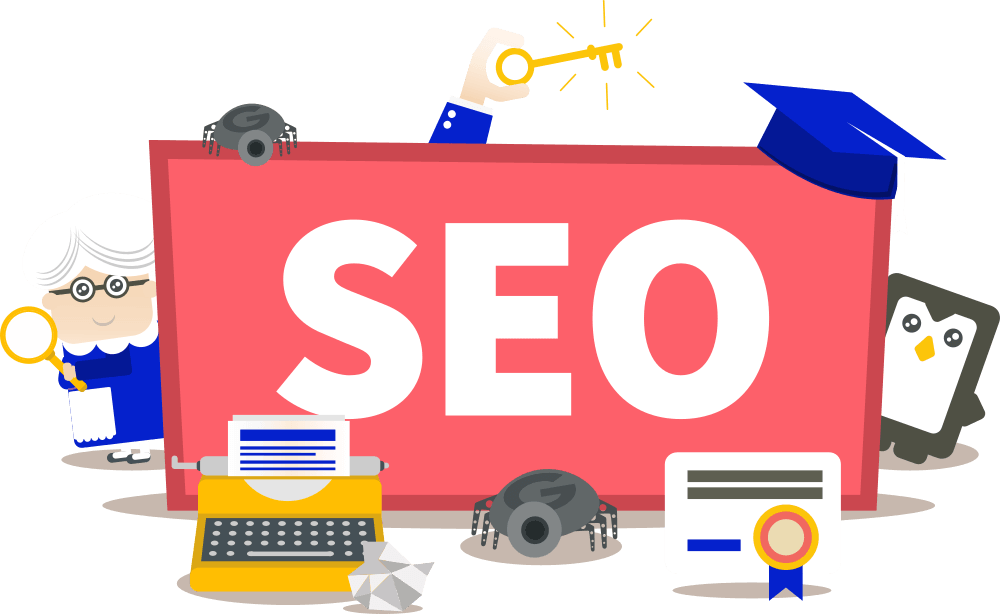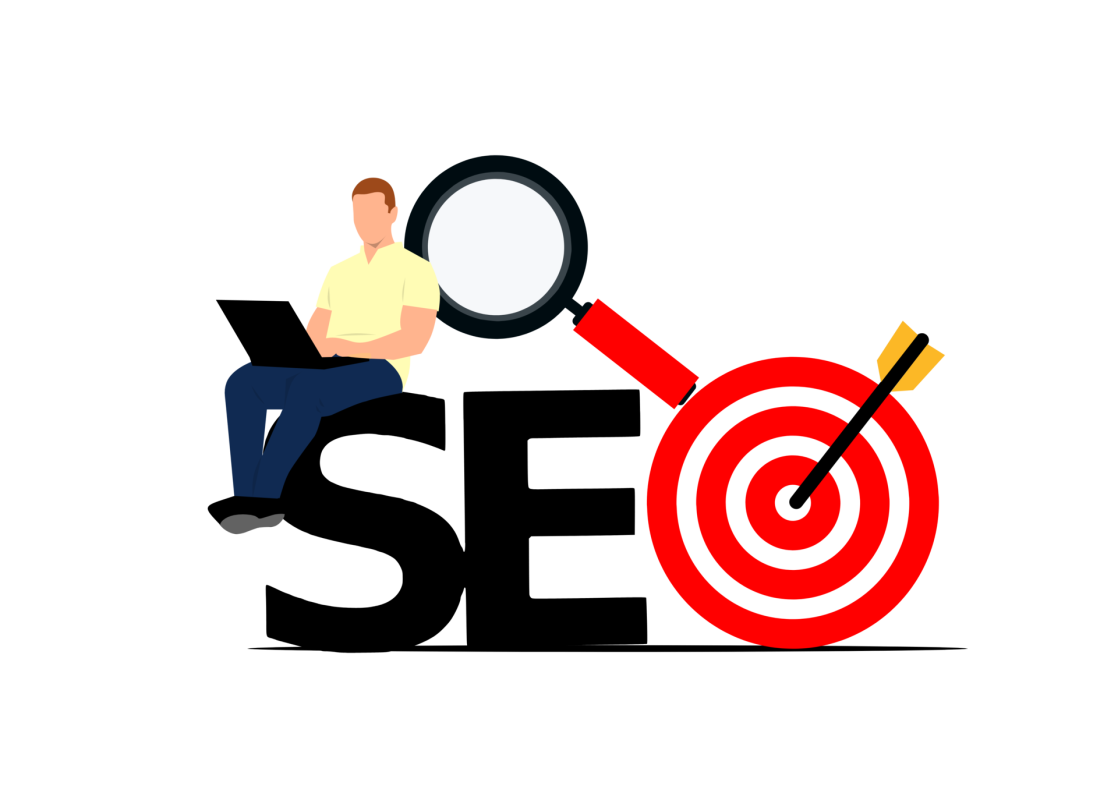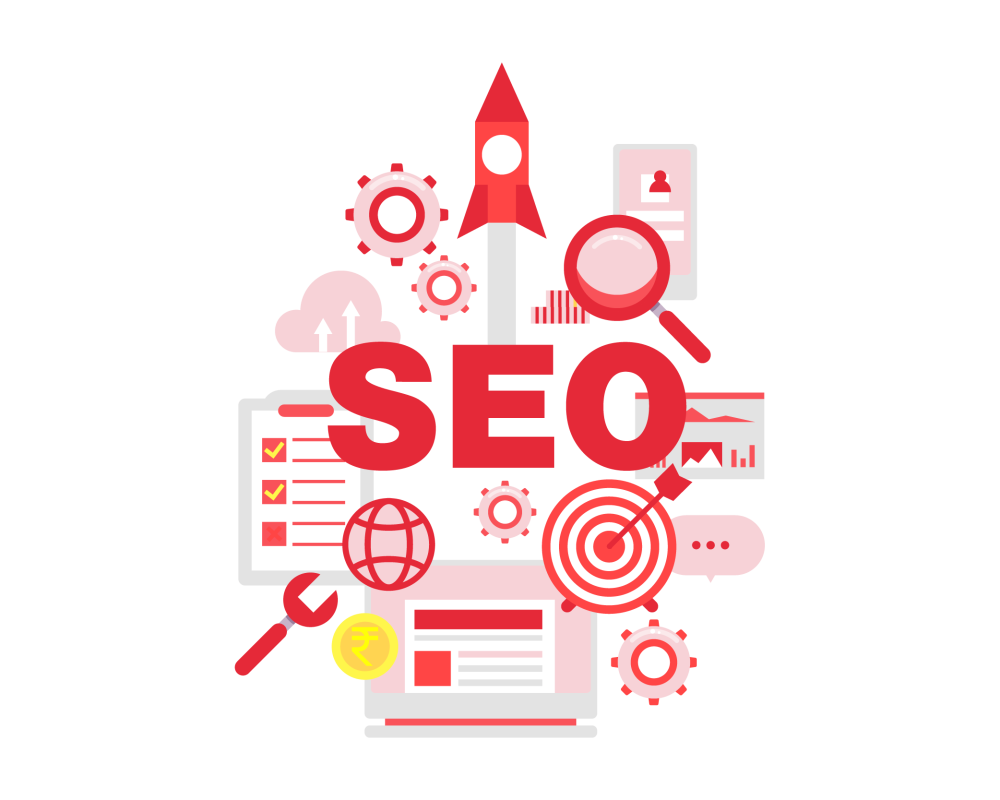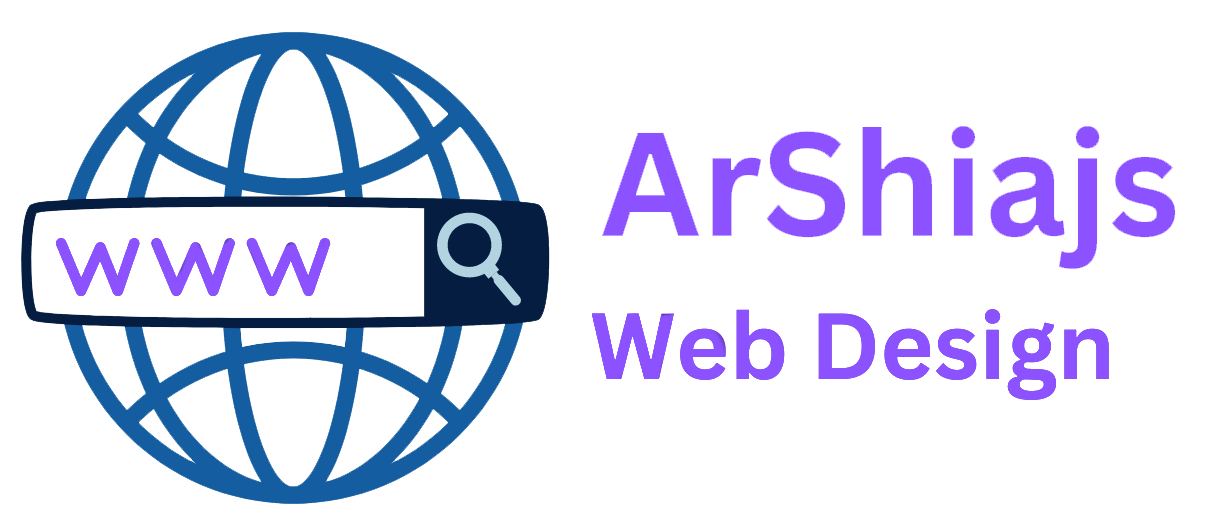SEO and site optimization
SEO (Search Engine Optimization), or in Persian translation, search engine optimization, is a set of methods and techniques used to improve the ranking and display of a website in the organic (unpaid) search results of search engines such as Google, Bing, or Yahoo. The main goal of SEO is to increase the amount of organic (unpaid) traffic to a website and improve its ranking in the search results page.
SEO is divided into two main categories:
✔ On-Page SEO
✔ Off-Page SEO
On-Page SEO involves optimizing factors that are directly related to the website itself. This includes elements such as using appropriate keywords in content, optimizing page structure, improving website loading speed, using appropriate HTML tags (such as H1, H2 tags, etc.), and improving user experience.
Off-page SEO includes activities that take place outside the website and focus on increasing the website’s authority and external links. This includes building quality and relevant backlinks, social media presence, content reposting, surveys and opinion polls, and online advertising.
Using SEO techniques, a website can be improved in its ranking and visibility in search results, and as a result, increase website traffic.
SEO and content marketing services
✔ Website optimization based on SEO rules and standards
✔ Optimize the content of the main pages of the site
✔ Digital advertising strategy
✔ Optimize CSS and JavaScript files
✔ Reduce screen size
✔ Sitemap creation and optimization
✔ Creating and optimizing Google bot file
✔ Reduce server requests
✔ Modify URL structure
✔ Competitor analysis
✔ Increase site traffic
✔ Implementation of pillar cluster page structure
✔ Ranking words on Google pages
✔ Create social signals
✔ Optimize and increase site crawl budget
✔ Implement local SEO
✔ Website SEO performance analysis
✔ Content production and marketing
✔ Solutions to increase audience on social networks
✔ Optimization and SEO of all page titles
✔ SEO content production
✔ Developing a content strategy
✔ Check site speed
✔ Analytics installation and analysis if needed
✔ Fix errors in Search Console
✔ Install and analyze Search Console on a monthly basis
✔ Keyword ranking report (every 3 months)
✔ Create social signals
✔ Implementation of amp
✔ Schema preparation
✔ Site security
✔ Implement Tag Manager for better tracking
✔ Optimize the size and volume of photos
✔ External link building
✔ Production of reportage content
✔ Internal linking
✔ Backlink building
✔ Implementing LSI on articles and pages
✔ Keyword research for blogs and magazines
✔ Keyword research for products
✔ Long Tail Implementation in Articles
✔ Create and modify photos with the same format
✔ Ranking words on Google pages
✔ Page building for important landings
✔ Designing exclusive graphic images for the main image of new articles
✔ Fix site errors
✔ Implementing a content calendar
✔ Getting clicks and impressions
Responsive sites:
A responsive website is a website that is designed and developed to display flexibly and optimally on different devices and screens. This type of web design automatically and optimally resizes the site according to the dimensions of the user’s device screen so that the content is displayed correctly.
When the user views the site on a mobile device, tablet, or a different resolution of the computer, responsive design can optimize the page layout, fonts, images, and other elements so that the site is displayed correctly and is readable and usable.
Using various technologies such as HTML5, CSS3, and JavaScript, responsive sites can dynamically adjust page elements and change their display based on the needs of the user’s device. For example, in a responsive site, the navigation menu may be displayed horizontally on the desktop version, but appear vertically and sliding on the mobile version to be better accessible in the smaller screen space.
Responsive sites have advantages that help users have a better user experience of the site, without the need to zoom and scroll horizontally. Also, responsive sites can have a significant improvement in SEO position and page load score in search engines.
The importance of SEO
Optimizing a site for search engines actually allows you to get a better ranking in Google and be shown in the initial results of Google. When your website is shown in the search results of users, the click-through rate increases and as a result, the sales of the site should also increase. Therefore, it can be said that implementing SEO principles directly affects your sales.
Increasing traffic and site visits with SEO
With website SEO, the overall credibility of the site is increased, and as a result, as your ranking in Google improves, you will be more visible and more users will visit your site. This also increases traffic and overall site visits.
Branding with SEO
When your site appears in Google results, it increases your credibility and reputation in your field of expertise, and your site’s name stays in the minds of your audience. This is very effective in building your brand.
SEO with a sustainable and long-lasting effect
By optimizing your site, your site’s traffic will increase naturally and you won’t simply return to your previous position. While increasing site traffic through advertising in any way is temporary, and you will face a sharp drop in visitors after the advertising is stopped.
Better visibility of the site on Google
By optimizing your website structure, your site pages are modified in a way that is more accessible to users and easier to find by Google’s search engine. When your website is shown more often in Google, you will also get more visitors to your site.
What does website SEO depend on?
Site SEO depends on several factors, which can be divided into two main categories: internal factors (On-Page SEO) and external factors (Off-Page SEO).
Internal SEO factors (On-Page SEO) include the following:
1. Keywords: Using appropriate keywords related to the site’s content in the page title, headings, texts and meta descriptions is important.
2. URL structure: Using SEO-friendly and readable URLs that include important page keywords.
3. Content: Providing appropriate content related to the desired keywords, using relevant titles and sub-titles, content diversity and attractiveness, appropriate text length and using internal links to connect different pages of the site to each other are some of the important factors in content SEO.
4. Title and Meta Description: Using a title tag and appropriate meta description that explain the content and keywords of the page.
5. Image Optimization: Using image filenames, alt text, and appropriate descriptions for images to increase their accessibility and SEO.
6. Loading Speed: Optimizing the loading speed of site pages to provide a better user experience and improve the site’s Google rankings.
7. Mobile Responsiveness: Designing and optimizing your site for optimal display on mobile devices and adapting to different mobile page sizes.
Off-Page SEO factors include the following:
1. Backlinks: The number and quality of links that point to your site from other sites.
2. Linker Ranking: The credibility and authority of sites and pages that link to your site.
3. Social Media Presence: Being active and present on social networks to increase engagement with your audience and attract their attention.
4. Social Score: The number and quality of social shares and bookmarks on your site’s content and pages.
5. Social Signals: Comments, reviews, ratings, and user feedback about the site and content.
6. Hosting and Server Speed: The quality and strength of the site’s hosting and the speed at which the site’s pages load.


Special services SEO



In addition to the internal and external factors mentioned in the previous section, website SEO also depends on other factors. Here are some of them:
1. User Experience: One of the important SEO factors is user experience. The site should have a good user interface that provides easy navigation, good loading time, and responsive design for different devices. Also, the content should be attractive, relevant, and useful for users and attract them to the site.
2. Site Authority: One of the important factors in SEO is site authority. Site authority means the trust and authority of the site considered by search engines. This factor is directly affected by the links and the ranking of the sites that link to you. Therefore, to increase the authority of the site, get links from reputable and relevant sites and pay attention to the quality of the content.
3. Page Loading Speed: The speed of loading the site’s pages is one of the important SEO factors. Users expect the site’s pages to load quickly, and any delay may cause users to leave and increase the bounce rate. To optimize loading speed, you can use image compression, reduce the number of requests, use a content delivery network (CDN), and optimize your site’s code.
4. Search engine optimization: Your site must be search engine-friendly in order to be displayed in their search results. Improving compatibility can include using Schema Markup, robots.txt, XML sitemaps, and other SEO standards.
5. Search engine guidelines: It is also important to follow the SEO guidelines provided by search engines like Google and Bing. These guidelines include things like content optimization, link structure, using meta tags, and more that will help your site be better visible to search engines.
Ultimately, SEO is a complex process and may vary depending on the specific needs and situation of each site. Competitor research, keyword research, webmaster data analysis, and continuous site performance evaluation are some of the things that are effective in SEO. With this information and the right tools, you can improve your site’s SEO and achieve high search engine rankings and traffic to your site.
Steps to implement website optimization services

Site SEO analysis and review
The first step of our SEO services is to review the current status of the site. In general, factors such as content quality, the number of current backlinks to the site, hidden tags, zombie pages, etc. affect the SEO of the site. For this reason, we must first analyze the current status of the site’s SEO and determine the necessary strategy based on them.

SEO strategy design
The next step is to develop a proper SEO strategy or plan. To do this, you need to identify your business competitors, your website audience, your budget for SEO, and everything else your website needs. Then, based on the answers to these questions and the current state of your site, design the best SEO strategy.

Technical SEO of the site
Another measure taken in the field of site optimization services is technical SEO of the site. Technical SEO of the site means optimizing the URL of pages, eliminating broken links, optimizing the site’s coding, optimizing the site’s speed, etc. Before any action, it is necessary to optimize the technical condition of the site.

On-site and off-site SEO
After the technical SEO of the site, it is time for the internal and external SEO of the site. One of the most important steps in the field of internal SEO is content production, which should be done based on the keywords of your field of work. In addition, building reliable backlinks is also one of the most important steps in the external SEO of the site, which has a great impact on improving the site’s ranking.
Frequently Asked Questions about SEO and Site Optimization
There is no definitive answer to estimate the time; but if site optimization activities are carried out systematically, suitable results in Google will be achieved between 6 and 12 months.
After the technical SEO of the site, it is time for the internal and external SEO of the site. One of the most important steps in the field of internal SEO is content production, which should be done based on the keywords of your field of work. In addition, building reliable backlinks is also one of the most important steps in the external SEO of the site, which has a great impact on improving the site’s ranking.
The cost of SEO is calculated based on the competitiveness of the keywords you are targeting. The more competition there is for a keyword, the more it will cost to SEO it.
SEO is a very sensitive area of expertise. Doing it yourself if you are not experienced in this area is a big risk, because if you make SEO mistakes, you will cause the entire site and content to be removed from Google.
Yes, in most cases, if Google has penalized your site, with proper content creation techniques and natural backlinks, you can quickly get the site out of the penalty and develop the SEO process.
One of the biggest mistakes website owners make is abandoning their site after it has ranked. They think that now that their site’s ranking in Google has improved, it’s over and they’ll stay there forever. But you should keep in mind that there are many websites entering your niche every day and trying to reach the first page of Google. On the other hand, Google’s algorithms are constantly changing, and if you don’t keep up with them, you’ll quickly lose your ranking. So, don’t abandon your site after you’ve reached a good position.
